How to Plant Perennials Correctly Like an Expert
In this actionable article with real experience, we will show you how you can plant perennial plants including bulbs and seeds. Here is a quick summary:
After countless tests, we experienced that the best way to plant perennial plants is to plant at the optimal time, know your USDA Gardening Zone, and then plant step-by-step into the proper sized hole with the right spacing, after watering your perennials deeply and maintain them correctly.


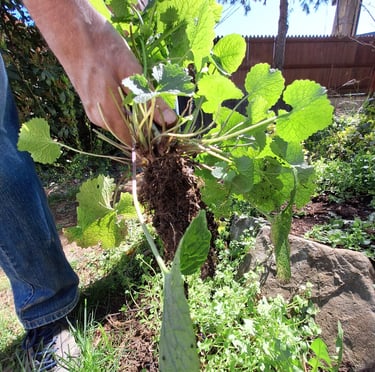





Selecting and Understanding Your Perennial Plants
What Conditions Do Perennials Require?
Before planting, consider the specific maintenance and needs of the perennials you wish to grow. For instance, some plants are adaptable and tolerate a range of conditions, while others might require more specific environments, such as moist, well-drained soil or full sun.
Know Your USDA Growing Hardiness Zone
Understanding your USDA Hardiness Zone is important for selecting perennials that will thrive in your climate:
Zone Information: The USDA Plant Hardiness Zone Maps divide North America, Europe, and other continents into hardiness zones based on average annual minimum winter temperatures.
Application: Knowing your zone helps you choose plants that can survive your area's coldest temperatures. So quickly check their zone compatibility to ensure they are suited to withstand the typical conditions of your region to prevent you have to get rid of plants soon.
Preparing Your Spot and Using The Right Soils to Plant Perennials
Proper site preparation can make a significant difference in the success of your perennial garden. For perennials that prefer well-drained soil, like lavender ensure your garden bed is loose and free of weeds.
We saw that replacing clay soil with compost or gypsum can improve drainage and texture, making it suitable for planting perennials that might otherwise struggle in dense, compact soil.
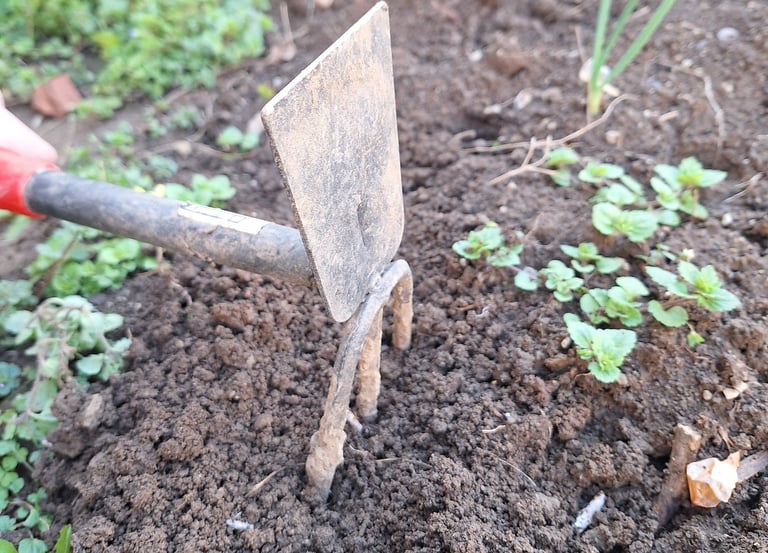

Planting Perennials Step-by-Step
1. Plant in the Right Time
The general best time to plant plants and perennials is in the fall or early spring. Planting in the fall allows roots to establish before winter, providing a strong start for spring growth.
2. Dig Holes With The Right Planting Depth and Spacing
Dig a hole twice as wide as the root ball but just as deep so that the plant sits at soil level or slightly above to accommodate natural settling.
Expert Tip: Spacing plants according to their mature size is best in our experience because it allows for air circulation and extended growth space which really make your perennials plant happy.
3. Planting Your Perennial Plants, Bulbs, or Seeds:
Perennial plants from pods: For plants with established root balls, ensure that the top of the root ball is level with or slightly above the surrounding soil to prevent water pooling.
Backfill the hole with soil and firm carefully to support the plant and eliminate air pockets.
Bulbs: Plant bulbs at a depth three times their height. For example, a 5 cm (2 in) tall bulb should be planted 15 cm (6 in) deep.
This rule ensures that bulbs have enough insulation from cold temperatures and enough space to root.
Seeds: Sow seeds directly into prepared soil or start them in containers. Cover seeds with soil about twice their diameter and water gently.
Planting Perennials in Specific Conditions
In Drifts: For a natural look, plant perennials in drifts or groups of the same plant. This approach mimics natural growth patterns and creates visual impact.
In Clay Soil: Enhance heavy clay soils with organic matter to improve drainage before planting.
In the Fall: When planting perennials in the fall, choose plants that are hardy and mature enough to withstand winter. Mulching after planting helps protect the roots from freezing temperatures.
On Slopes: To stabilize the soil and increase water absorption, create terraces or use groundcover plants that spread quickly. Plants like creeping phlox and sedum are excellent choices, as they root deeply and hold the soil effectively.
Under Trees: Planting under trees requires selecting perennials and plants that are ideal for woodlands and shaded areas. Hostas and ferns are ideal as they are adapted to grow in low light conditions and have less competitive root systems, which allow them to coexist with tree roots.
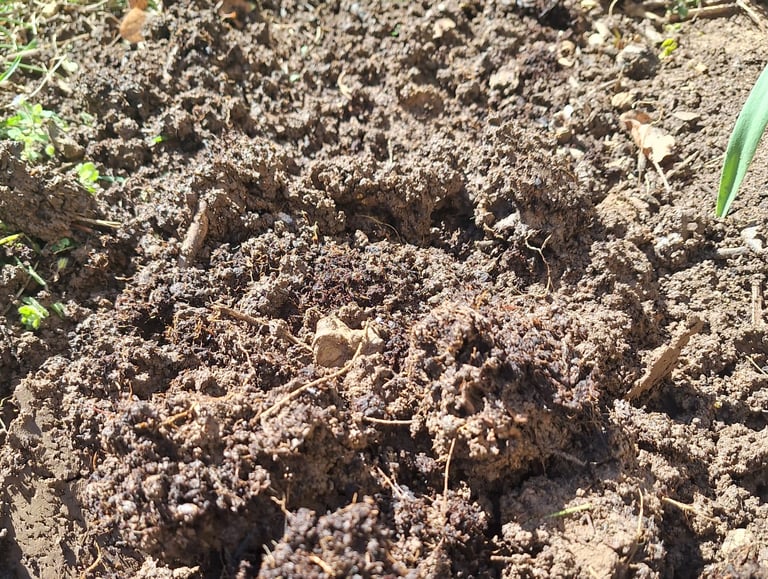





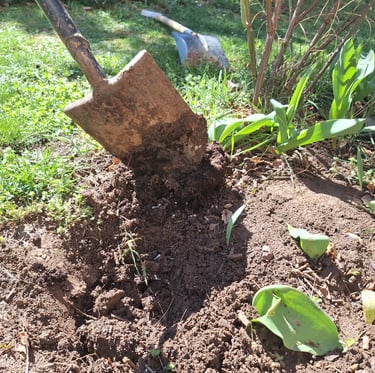



Applying the Right Long-Term Care
Watering
Technique: After planting, water your perennials deeply to encourage deep root growth, in our experience this helps your plants become more drought-tolerant.
Aim to moisten the soil to a depth of at least 15-20 cm (6-8 inches). As the plants establish, reduce the frequency of watering to promote stronger root systems.
Use a soaker hose or drip irrigation for efficient water delivery directly to the root zone.
Schedule: Water early in the morning to reduce evaporation and allow foliage to dry before evening, which helps prevent diseases. We also saw that the frequency of watering will depend on your soil type and climate. Sandy soils dry out faster than clay soils, so they require more frequent watering.
Feeding
Fertilization: Feed your perennials in the spring as new growth appears. Use a balanced, slow-release fertilizer (NPK 10-10-10) that supplies nutrients over time rather than all at once.
This steady feeding supports consistent growth throughout the growing season.
Application: Apply fertilizer around the base of the plants, avoiding direct contact with foliage and roots to prevent burns.
Expert Tip: Water the soil after applying fertilizer to help distribute the nutrients into the soil.
Mulching
Purpose: Laying and Using Mulch helps conserve moisture, suppress weeds, and maintain soil temperature. Organic mulches, such as shredded bark, compost, or leaf mold, additionally enrich the soil as they decompose.
Application: Apply a 2-3 inch layer of mulch around your perennials, keeping it a few inches away from plant stems to avoid rot. Refresh the mulch layer annually in spring or fall to maintain its benefits.
Pruning and Deadheading
Pruning: Trim perennials in early spring or fall to remove dead or damaged growth and shape the plants. This promotes healthy growth and improves air circulation, which reduces the risk of disease.
Deadheading: To deadhead perennial plants, remove spent flowers regularly to encourage plants to produce more blooms and new growth.
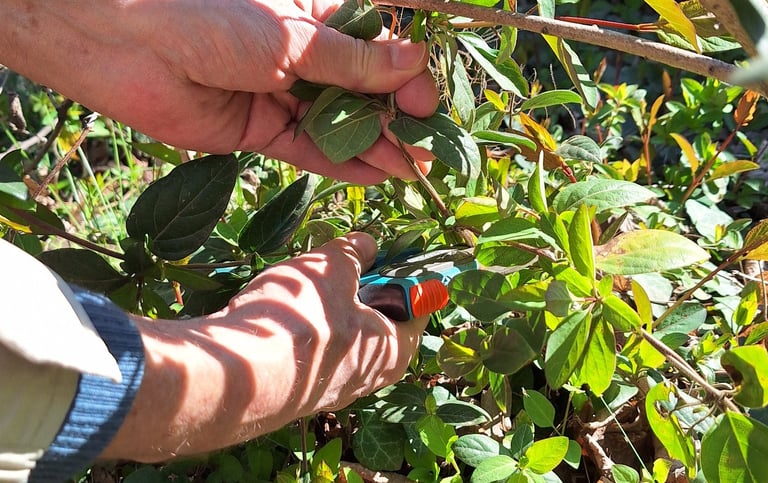





Frequently Asked Questions (FAQs)
What month is best to plant perennials?
The best months to plant perennials is typically, in early spring between March and May and, in fall between September and October.
What time of year do you prune perennials?
The best time to prune perennial plants is generally, late winter or early spring before new growth begins.
This timing helps prevent disease and encourages vigorous spring growth. However, for summer-blooming perennials, pruning might be best after they finish flowering.
What is the lifespan of a perennial plant?
Generally, most perennials will thrive for an average of 3 to 5 years before they may need to be divided or rejuvenated.
The lifespan of a perennial plant can vary widely depending on the species. Some perennials, like peonies, can live and thrive for decades if cared for properly. Others may have shorter lifespans of just a few years.
How close to plant perennials?
Spacing for perennials should be based on their mature size. As a general rule, plant small perennials about 30 cm (12 inches) apart, medium-sized perennials 45-60 cm (18-24 inches) apart, and larger varieties 60-90 cm (24-36 inches) apart.
This spacing allows each plant enough room to grow to its full size and spread without competing excessively with neighbors for nutrients, light, or moisture.


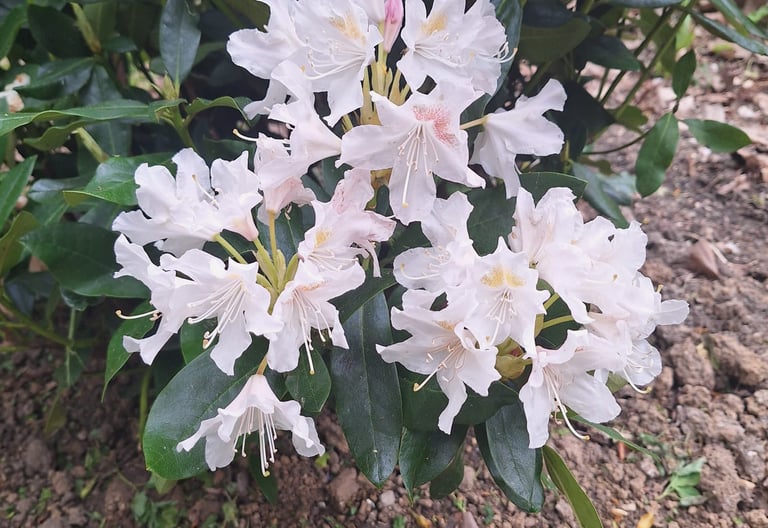




Sources
Nature and Sustainability uses only high-quality sources, including peer-reviewed studies to support the facts we describe in our articles. Please read our editorial policy to learn more about how we keep our content accurate, reliable, and trustworthy.
General info and facts about perennials: Perennials | University of Maryland Extension (umd.edu), Maintenance of Perennials (psu.edu)
Hardiness zones information: Hardiness zone - Wikipedia
Best planting soil: Gypsum | Soil Science Society of America, Gardening in Clay Soils | USU
Planting info and facts: Transplanting Perennials - Birds and Blooms, https://gardeningsg.nparks.gov.sg/page-index/horticulture-techniques/plant-spacing/, How to sow seeds successfully | Thompon & Morgan, When & How to Plant Bulbs | Garden Design, Gardens: Planting in drifts | Gardens | The Guardian
Perennial after-planting maintenance: fungal diseases- PMC (nih.gov), Guide to fertilizing plants | UMN Extension, How to Mulch | The Morton Arboretum
Share this article:




Article By:
Calin has been in the garden industry for 5 years and knows a lot about gardening and plants. He is the founder of this website and is responsible for most of the content.
Reviewed By:


Lucy is a horticulturist with a passion for sustainable agriculture and permaculture. She spent many years exploring the country's diverse flora and fauna and developed a deep appreciation for natural ecosystems.

